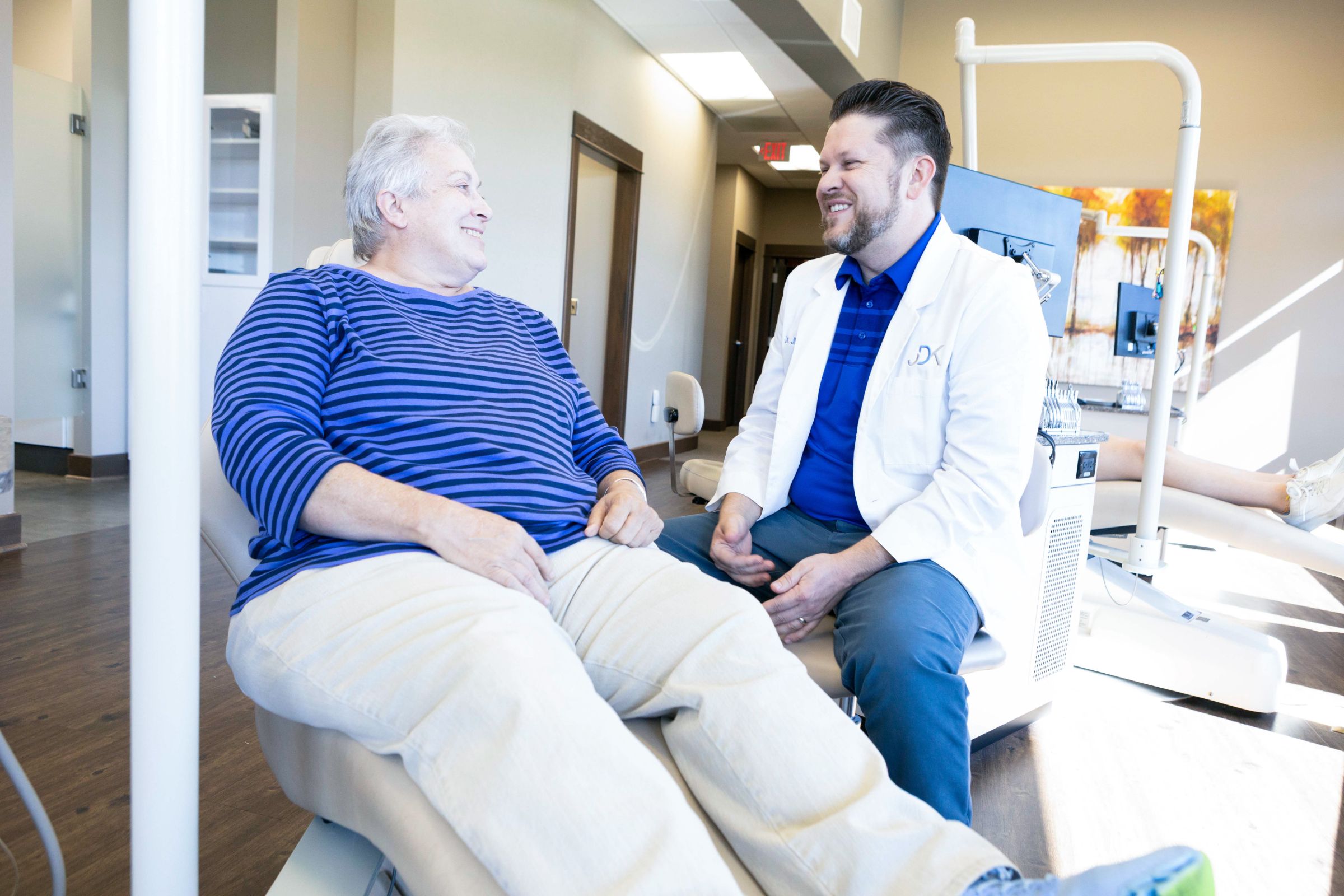Here at Dillehay Orthodontics, our patients love the incredible variety of orthodontic treatments available. Gone are the days when all you had to choose from were braces or braces. Now, you can benefit from the advances to traditional braces or choose an option like clear aligners or even something at the cutting edge of orthodontic treatment, like lingual braces!
But what are lingual braces? Who are they for? And what sorts of advantages do they have over more traditional offerings? Read on as we share all about the exciting innovations in orthodontic treatment and how we can help you unlock the best version of your smile.
What are Lingual Braces?
Lingual braces are an orthodontic treatment that uses metal brackets and wires to straighten teeth. Unlike traditional braces on the front of teeth, lingual braces are placed on the back. They work the same way as traditional braces, but since they are hidden from view, they’re an excellent option for those concerned about the appearance of metal braces.
What are the Advantages of Lingual Braces?
Several advantages of lingual braces make them an attractive option for those looking for a brighter smile. First, they are virtually invisible, meaning patients can have their teeth straightened without anyone knowing they are undergoing treatment. They’re an excellent choice for adults interested in lower-profile treatment options.
Secondly, lingual braces are as effective as traditional braces in straightening teeth, meaning patients can expect the same results. Because lingual braces are placed on the back of teeth, they are less likely to cause discomfort or irritation to the lips and cheeks.
Another benefit of lingual braces is that they are highly customizable. Unlike traditional braces, lingual braces can be customized to fit your teeth’s unique shape and contours. This ensures orthodontic treatment that is tailored to your specific needs, which can lead to better and faster results.
What are the Disadvantages of Lingual Braces?
While lingual braces have many advantages, there are also some disadvantages to consider. One consideration is oral hygiene. Because they are on the back of teeth, they can be more challenging to clean than traditional braces. Proper oral hygiene and caretaking can decrease your risk of tooth decay and gum disease. If that sounds complicated, don’t fret. Dr. JK will happily show you how to care for your new lingual braces!
Due to their placement behind the teeth, lingual braces may cause slight speech difficulties, particularly in the first few weeks of treatment. We see these difficulties because the tongue has to get used to new positioning caused by braces. However, we tend to find that any alteration of speech patterns is relatively mild and goes away after you become more acquainted with the braces.
Another consideration is that lingual braces can be more expensive than traditional braces, as they require specialized training and equipment. But don’t let that deter you from asking about lingual braces! We believe that orthodontic treatment should always be within reach, so we offer flexible payment plans to fit every family’s budget.
Who is a Candidate for Lingual Braces?
Lingual braces are great for most patients. However, they may not be ideal for patients with certain dental conditions, such as severe crowding or bite issues. It is essential to consult with an orthodontist, like Dr. JK, to determine if lingual braces suit your individual needs.
How are Lingual Braces Placed?
The process of placing lingual braces is similar to that of traditional braces. First, Dr. JK will take impressions of your teeth and create a customized treatment plan. Next, the lingual brackets and wires are placed on the back of the teeth using a special bonding agent. The process of placing lingual braces can take longer than traditional braces, as the brackets and wire placement procedures are a bit more complicated, due to their location on the back of the teeth.
